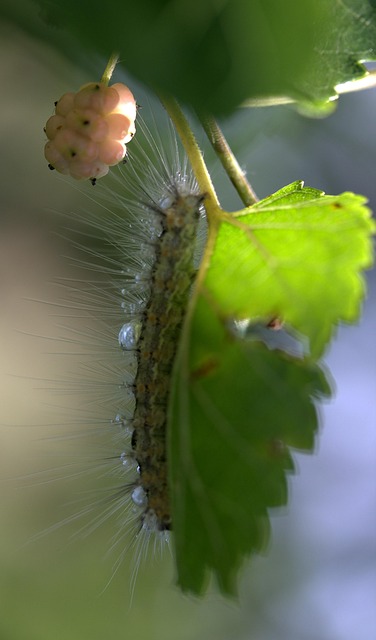Millipedes, drawn to dark, damp environments with ample food sources, commonly infest commercial properties due to their moisture-rich settings and organic matter. Effective commercial millipede control involves a combination of insecticides, natural repellents, heat treatment, and preventive measures like sealing entry points and improving sanitation. DIY methods can help with mild infestations but severe cases often require professional services using specialized equipment and chemicals for thorough treatment and long-term protection. Regular inspections, prompt action, and maintaining a clean environment are key to preventing future commercial millipede control challenges.
Millipedes, though unwelcome intruders, can be effectively managed with the right strategies. Understanding their behavior and habitat is crucial for successful treatment. This article explores both professional and DIY methods for eliminating millipede infestations, focusing on commercial millipede control solutions as a key component. We delve into prevention tips to ensure future protection against these critters, providing comprehensive guidance tailored to your needs.
Understanding Millipede Behavior and Habitat
Millipedes are nocturnal creatures, preferring dark and damp environments, making them prevalent in areas with high moisture levels like basements, crawl spaces, and kitchens. They move slowly and tend to stay close to walls or hidden places. Understanding this behavior is key when it comes to effective millipede control. Commercial properties often face more severe infestations due to the diverse food sources available, including organic matter, cardboard, and fabric.
Identifying their preferred habitats allows for targeted treatment strategies. Professional pest control services specializing in commercial millipede control employ a range of methods from insecticides to natural repellents, ensuring a comprehensive approach that addresses both current and future infestations.
Commercial Millipede Control Methods: Professional Solutions
Many homeowners opt for professional help when dealing with severe millipede infestations due to their expertise and access to effective commercial millipede control methods. Professional pest control services employ a range of powerful tools to combat millipedes, ensuring thorough elimination. One common approach is the application of insecticides, which are carefully targeted to infested areas, including cracks, crevices, and dark corners where millipedes tend to hide. These treatments often involve residual pesticides that remain active for extended periods, providing ongoing protection against future invasions.
Additionally, professionals may employ specialized equipment like heat treatment or steamers, especially in cases of heavy infestations or hard-to-reach areas. These methods utilize high temperatures to kill millipedes and their eggs, offering a swift and effective solution. Commercial millipede control also includes preventive measures such as sealing entry points, improving sanitation, and modifying the environment to make it less hospitable for these pests. Such comprehensive strategies ensure not only immediate relief from millipede invasions but also long-term protection.
Do-It-Yourself (DIY) Treatments for Millipede Infestations
Millipede infestations can be a nuisance, but there are DIY treatments that homeowners can employ to effectively eliminate these pests. One popular method involves using boric acid or diatomaceous earth. These natural substances act as a powder barrier, disrupting the millipedes’ ability to move and eventually causing dehydration. You can apply them in affected areas, such as cracks, crevices, and along baseboards. Another DIY option is mixing equal parts water and dish soap in a spray bottle and targeting the millipedes directly. This solution helps smother them and is particularly useful for spot treatments.
While these DIY methods offer a cost-effective solution for minor infestations, commercial millipede control may be necessary for more severe cases. Professional services employ specialized equipment and chemicals to reach hard-to-reach areas and ensure a thorough treatment. They also provide long-term solutions by identifying and sealing entry points, thus preventing future invasions. Regular inspections and prompt action are key to managing millipedes effectively, whether through DIY treatments or professional intervention.
Preventing Future Millipede Infestations: Tips and Strategies
To prevent future millipede infestations, start by identifying and addressing entry points. Millipedes are known to enter homes through cracks, gaps in foundations, and openings around pipes or wires. Sealing these areas with caulk or appropriate sealing materials can significantly reduce their access. Regularly cleaning and vacuuming, especially in corners and under furniture, helps remove eggs and young millipedes. Additionally, maintaining a clean yard by removing organic debris, leaf piles, and overgrowth creates an unwelcoming environment for millipedes.
Implementing commercial millipede control measures is crucial for severe infestations. Professional services offer targeted treatments using safe and effective pesticides or natural repellents. They also provide ongoing monitoring to ensure the problem doesn’t recur. Regular inspections are key; checking for millipede signs like tracks, shed skins, or live insects in dark, humid areas can help catch infestations early. Proactive measures combined with professional assistance offer the best defense against millipedes and maintain a pest-free environment.
Millipede infestations can be effectively managed through a combination of understanding their behavior, employing professional or DIY treatments, and preventing future occurrences. Commercial millipede control methods offer robust solutions for severe infestations, while DIY options provide cost-effective, eco-friendly alternatives. By implementing the strategies discussed, including maintaining a clean environment, sealing entry points, and using targeted treatments, you can effectively eliminate millipedes and prevent their return. Regular inspection and proactive measures are key to keeping these pests at bay.
